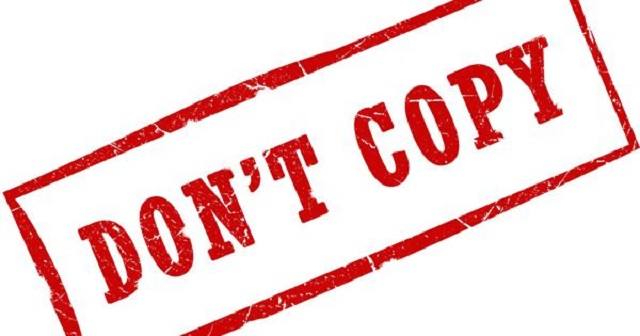The crime of copy cats

LAST week the examiner went in depth on the issue of examination malpractice. We described examination malpractice as cheating.
That is to say cheating, whether by copying or peeping, seeking to access the examination papers prematurely for the sake of revising and getting the answers before the examination, or impersonation.
Having looked at different forms of cheating we want to look at one, which is normally committed on a daily basis as people write essays, assignments and research papers – plagiarism.
To plagiarise is “to use the words or ideas of another person as if they were your own words or ideas that is to steal and pass off (as the ideas or words of another) as one’s own (Merriam-Webster On-line dictionary).
In short, to plagiarise means to copy someone else’s work or ideas word for word and then present it as your own.
In an examination system you find students plagiarise each other’s work and then end up with identical compositions or answers to essay questions.
In Research and assignments, google helps us by giving us work written by someone else for us to be able to get references and ideas.
However, it is highly illegal and immoral for one to copy word for word or citations, without acknowledging the original author of the work.
This applies to books in a library as well, students are given access to books for research and ideas, however, they should never copy the work of another or take paragraphs from the books and try to pass them off as their own.
The examiner would like to use the information provided by the plagiarism.org site to explore the ways to utilise other people’s information.
How to paraphrase
Let’s say that you want to introduce information from another source (a book, a journal article, or website, for example) into your paper.
You could approach this by quoting the work directly or try to convey the information from the original source in your paper by rephrasing it in your own words. This latter approach is paraphrasing.
Let’s take a moment to make a clear distinction between the two:
Quoting: To quote is to include the identical wording from the original source in your paper. Quoted material in your paper is distinguished from your own words by the use of ” ” or by indenting the quoted text (if quoting a longer passage).
In addition to quotation marks or indenting, all quoted material should also be cited, using either footnotes, endnotes, or in-text citation.
Paraphrasing: To paraphrase is to include the ideas or information from an original source in your paper by rephrasing those ideas or information in your own words.
The key to successful paraphrasing is to use as few words as possible from the original text–be mindful not to change the meaning that you are trying to convey as you rephrase–and to cite your paraphrase. Without proper citation, your paraphrase could be construed as plagiarism.
What is citation?
A “citation” is the way you tell your readers that certain material in your work came from another source.
It also gives your readers the information necessary to find that source again, including: information about the author, the title of the work, the name and location of the company that published your copy of the source, the date your copy was published, the page numbers of the material you are borrowing
Why should I cite sources?
Giving credit to the original author by citing sources is the only way to use other people’s work without plagiarising. But there are a number of other reasons to cite sources:
Citations are extremely helpful to anyone who wants to find out more about your ideas and where they came from, not all sources are good or right — your own ideas may often be more accurate or interesting than those of your sources.
Proper citation will keep you from taking the rap for someone else’s bad ideas; citing sources shows the amount of research you’ve done and
Citing sources strengthens your work by lending outside support to your ideas
Doesn’t citing sources make my work seem less original?
Not at all. On the contrary, citing sources actually helps your reader distinguish your ideas from those of your sources. This will actually emphasize the originality of your own work.
When do I need to cite?
Whenever you borrow words or ideas, you need to acknowledge their source. The following situations almost always require citation:
– whenever you use quotes
– whenever you paraphrase
– whenever you use an idea that someone else has already expressed
– whenever you make specific reference to the work of another
-0 whenever someone else’s work has been critical in developing your own ideas.
What is quoting?
Taking the exact words from an original source is called quoting. You should quote material when you believe the way the original author expresses an idea is the most effective means of communicating the point you want to make.
If you want to borrow an idea from an author, but do not need his or her exact words, you should try paraphrasing instead of quoting.
How often should I quote?
Most of the time, paraphrasing and summarising your sources is sufficient (but remember that you still have to cite them!).
If you think it’s important to quote something, an excellent rule of thumb is that for every line you quote, you should have at least two lines analysing it.
How do I incorporate quotations in my paper?
Most of the time, you can just identify a source and quote from it. Sometimes, however, you will need to modify the words or format of the quotation in order to fit in your paper.
Whenever you change the original words of your source, you must indicate that you have done so.
Otherwise, you would be claiming the original author used words that he or she did not use. But be careful not to change too many words! You could accidentally change the meaning of the quotation, and falsely claim the author said something they did not.
Information source: www.plagiarism.og
For comments or more information, please email [email protected]; [email protected] or WhatsApp 0772148786. Website www.zimsec.co.zw












Comments